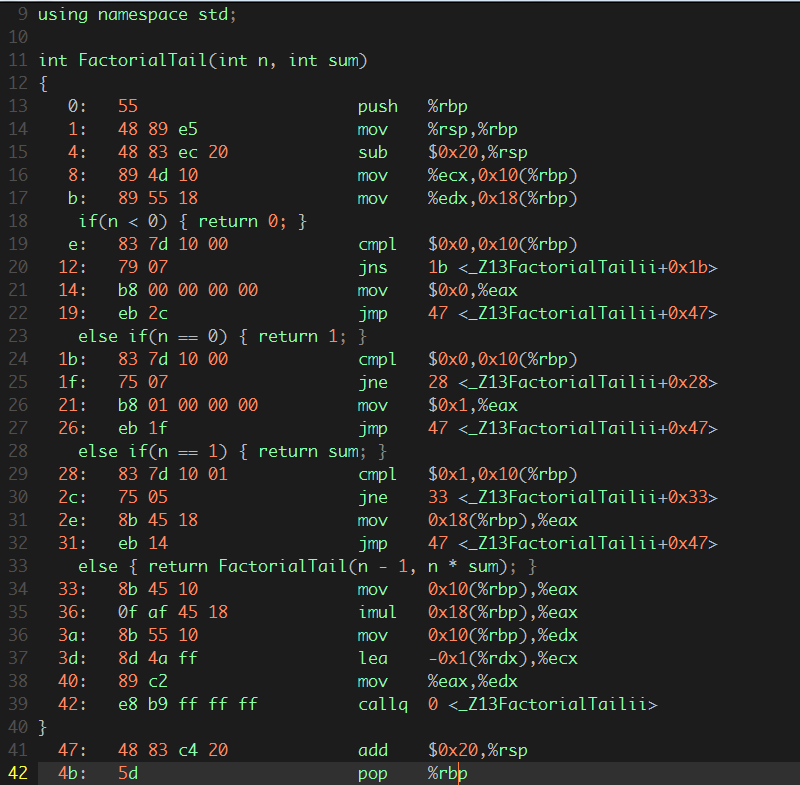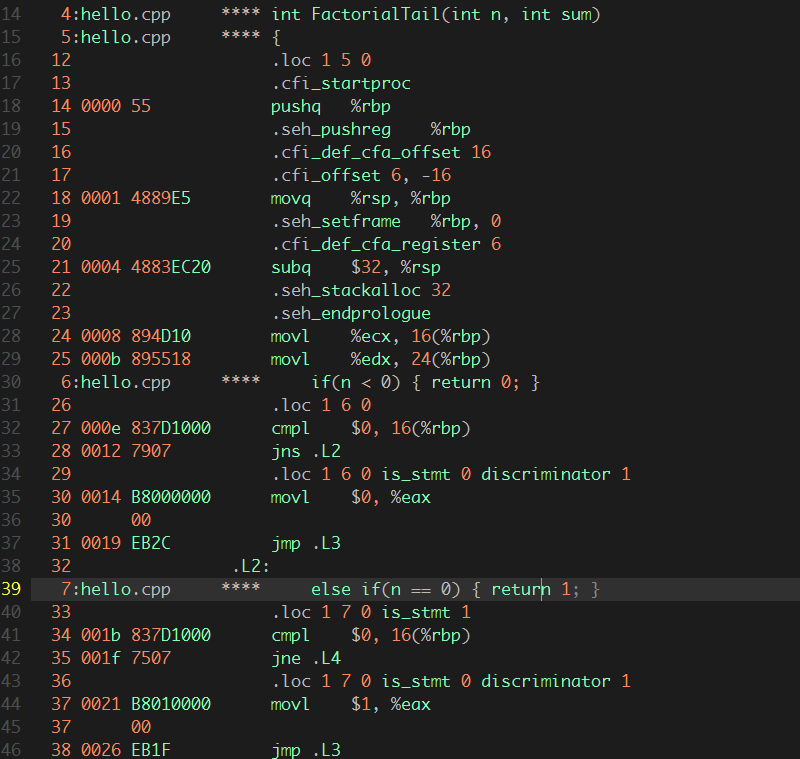GCC输出带C源代码的汇编文件,一共有两种方式(同样也适合G++输出呆CPP源代码的汇编文件)。
测试代码(hello.cpp)
#include<iostream>usingnamespace std;intFactorialTail(int n,int sum){if(n <0){return0;}elseif(n ==0){return1;}elseif(n ==1){return sum;}else{returnFactorialTail(n -1, n * sum);}}int main(){cout <<FactorialTail(5,1)<< endl;return0;}
第一种方式:
1、
g++-S hello.cppg++ -g -c hello.cpp
生成.s汇编文件和.o文件:

2、第一步中必须要使用第二条命令,第一条命令只是为了显示.s汇编文件
objdump -S hello.o > hello_objdump.s
生成含有调试信息、CPP源代码的汇编代码

第二种方式:
使用GNU C Assembler的列表功能来完成,例如:
g++-c -g -Wa,-adlhn hello.cpp > gnu.s
这个命令的说明如下:
-Wa,option :把选项option传递给汇编器.如果option含有逗号,就在逗号处分割成多个选项.也就是Gas,至于Gas的命令参数,可以查看相应的文档,其中-a[cdghlns]参数的作用是打开列表功能。
这种方式可以显示足够的信息,但是命令稍微复杂,参数比较多,不太容易选择。
Gas的命令行参数概要信息摘录如下:
1: a: -a[cdghlns] enable listings
2: alternate: --alternate enable alternate macro syntax
3: D: -D for compatibility
4: f: -f to work faster
5: I: -I for .include search path
6: K: -K for difference tables
7: L: -L to retain local symbols
8: listing: --listing-XXX to configure listing output
9: M: -M or --mri to assemble in MRI compatibility mode
10: MD: --MD for dependency tracking
11: o: -o to name the object file
12: R: -R to join data and text sections
13: statistics: --statistics to see statistics about assembly
14: traditional-format: --traditional-format for compatible output
15: v: -v to announce version
16: W: -W, --no-warn, --warn, --fatal-warnings to control warnings
17: Z: -Z to make object file even after errors
生成含有调试信息、CPP源代码的汇编代码:

相比而言,还是第一种方式生成的文件更加的直观明了。